- Fayetteville Rifle Shoulder Stock and Lockplate
- Fayetteville Rifle, Forward Stock & Barrel
- 1863 Fayetteville Armory Type III Rifle
- 1863 Fayetteville Rifle Type III Lock Plate
- Fayetteville Armory Proof Marks, VP & Eagle
- Fayetteville Barrel Stamped 1863
- 1863 Fayetteville Rifle Rear Sight
- Fayetteville Rifle Rear Barrel Band
- Fayetteville Rifle Type III Forward Barrel Band
- 1863 Fayetteville Rifle Nose Cap & Bayonet Lug
- Fayetteville Rifle Butt Plate, CSA
- 1863 Fayetteville Pinched Front Sight
- Type III Fayetteville Rifle Pinched Sight & Bayonet Lug
- 1863 Fayetteville Rifle Lock Plate, Full Cocked
- Fayetteville Rifle Ram Rod
- Confederate Linen Sling
- Fayetteville Rifle Type 3, Bayonet Lug & Front Sight
Union weapons went through a vigorous inspection process, if the viewing officer found flaws in the quality of the weapon he would reject it sending it back to the maker. The maker then would not get paid for the weapon potentially losing future contracts.
In the South it was a very different story, most armories and manufactures of weapons didn’t have much of a quality system. At the Richmond Armory, the Souths largest weapons factory there was a viewing process but most of the weapons that were viewed and proofed would not pass Northern standards.
However it was a much different story at the Fayetteville Armory. Phillip Burkhart, the former Harper’s Ferry mechanic and John Hall protégé served as master armourer for the Fayetteville Armory. He along with many of the mechanics, craftsman and laborers that worked at the Harper’s Ferry Armory were responsible for making the different versions of Fayetteville Rifles throughout the war.
Some of the equipment that was confiscated by Stonewall Jackson at Harper’s Ferry in May of 1861 was sent by rails to Richmond Virginia the rest was sent to the Fayetteville Armory in North Carolina along with many of the expert mechanics. This would give the Fayetteville Armory the quality equipment and expert craftsman they needed to make such a quality weapon that would even pass the strict quality inspections in the North.
The newest addition to the Civil War Arsenal is an 1863 Fayetteville Rifle Type III. Except for the S style hammer the rifle is a close copy to the U.S. Model 1861 rifle-musket. Clean straight lines and brass hardware make the Fayetteville a hard weapon not to like. The type III is different from the type II with its 1863 dated Lock Plate made entirely at Fayetteville. The Type II Lock Plates were made at the Richmond Armory and were very similar to the Richmond Lock Plates with the low profile hump, only difference is the markings on the plate.
Similar to the U.S. Model 1855 rifle the Fayetteville was designed with a stud on the right side of the muzzle for affixing a saber bayonet. Thousands of these fish scale bayonets were fabricated at the armory in 1862-1863. The saber bayonet was replaced with a socket bayonet by late 1863 on the Type IV Fayetteville’s for the remaining portion of the war.
I am looking for a fish scale Saber Bayonet, if anyone knows of one please please contact me at civilwararsenal@yahoo.com attn: Gene West. Thanks for stopping by, and if you have any questions about this rifle or any of the other weapons in my Arsenal feel free to ask…..oh and I’m always on the hunt for new weapons to add to my collection, especially Confederate. If you have any and are interested in selling them give me a shout maybe we can make a deal.

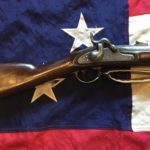
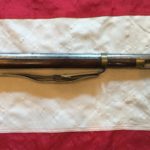
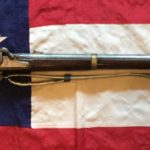

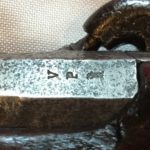
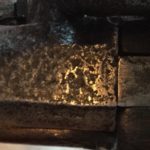
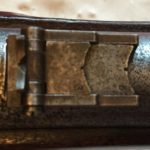
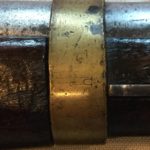
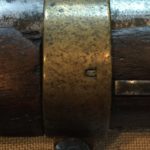
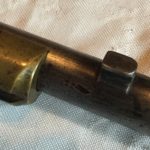
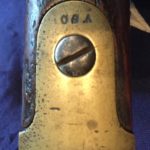
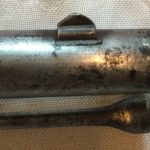
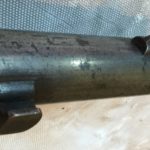
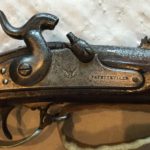
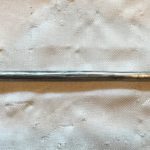
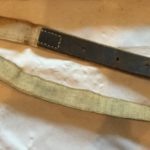
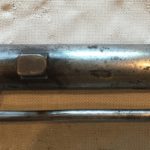
hi my name is CHARLES AND I PICKED UP LAST WEEKEND [10-7-17] A MOST UNUSUAL LOOKING GUN AT FIRST I THOUGHT IT WAS A JOKE IN THAT THE BEST I CAN DESCRIBE THE LOOKS OF IT AS A 1847 HARPER’S FERRY BUT PLATE, STOCK, BARREL, AND TRIGGER GUARD. NOW IT HAS A FAYETTEVILLE LOCK PLATE WITH THE NAME [FAYETTEVILLE, ALSO EAGLE, C.S.A., AND 1863. THE MORE I LOOKED THE MORE I NOTICE THAT THIS THING COULD HAVE WORKED BEING THE HAMMER AND NIPPLE LINED UP. I KNOW AT TOWARDS THE END OF THE ‘NORTHERN AGGRESSION’, THAT THIS WAS ” MAKE-DO-WITH-WHAT-YOU-GOT!!” I HAD FOUR ANCESTORS, OFFICERS NO LESS [ ARCHER] IN IT. I WILL TRY TO SEND PICTURES AND MEASUREMENTS TO YOU IF YOU ARE INTERESTED. YOU KNOW THE OTHER DAY I HEARD ON THE NEWS THE THE LAS VAGAS SHOOTING WAS THE LARGEST KILLING OF AMERICAN ON OUR SOIL IN HISTORY. HOW SOON WE FORGET. IN GETTYSBURG 50,000 ON BOTH SIDES THAT 3 DAY PERIOD. I GUESS THOSE PEOPLE DON’T MATTER ANYMORE!! MY EMAIL-xxxxxxxxxx phone 336-xxx-xxxx thanks for any help I WOULD LIKE TO FIND IT A GOOD HOME. IT IS IN RUFF SHAPE, HOWEVER IF IT IS AS I THINK, IT IS A STATEMENT TO THE INGENUITY AND SPIRIT OF THOSE FOLK IN A VERY HARD TIME. WHAT A CONVERSATION PIECE!! PLEASE LET ME KNOW, THANKS
Charles, please provide photos of Fayetteville and maybe we can make a deal…. lockplate, stock and barrel photos….. close ups please.
Regards, Gene West
HI GENE, GLAD TO HERE FROM YOU. I’LL TAKE PICS AS SOON AS I CAN, MAYBE TOMORROW[10-11-17]. I HAVE TO BE IN GREENSBORO TODAY FOR DOCTOR APPS. I’LL JUMP ON IT AS SOON AS I CAN, AND AGAIN THANKS.
Charles, unfortunately your weapons are in very rough condition, only good for parts. I do not believe the Harper’s Ferry weapon is original with the Fayetteville Lock Plate……this was added post war….I’m sorry I wouldn’t have an interest in them but thanks for reaching out to me and sending images of the weapons…..a picture says a thousand words……have a great day.
Regards Gene
Hey Gene, I saw what was tagged a confederate musket sling for sale. Wire hook looked correct, linen construction, and leather keeper on end, but no reinforcement leather strip, instead had 5 or 6 metal grommets or eyelets in sling for hook to attach. Can’t tell if it ever had the leather strip, or if the holes with eyelets were added because maybe the leather strip was lost or replaced. It does not look like it would be used for any other era rifle. Have you ever seen or heard of a confederate musket sling with this modification? Found as much info. as I can about Conf. slings from other sources but no luck. It certainly looks very old , Unable to produce pictures of it. Tom
Tom, if you could provide a couple of images of the sling I may be able help with any questions you have.
There have been other linen slings (over the years) made for different types of weapons. I have never seen a Confederate linen sling made with grommets, leaving me to believe it’s not a wartime sling or it’s a modification made after the war…….the South would not have had the ability to put metal grommets on the sling….it would have been to costly, time consuming and they just didn’t have the tooling to do so.
Send pictures and I’ll give you my thoughts.
Regards, Gene
Gene,
We recently came into possession of this rifle. We are collectors/dealers on the East Coast.
Experimental 50 caliber smooth bore Sprine rifle that was purportedly given to Major General Jules De Polignac of the CSA in 1864. 1 of only 25 that were made. The rifle is 43-7/8″ in length. Weighs about 7lbs, 3ozs. Unique firearm in that both set up for muzzle and breech loading.
Polignac was famous for being the Confederate diplomat to attempt to get France to come in on the side of the Confederacy. His ancestors also took care of the Royal Family’s Children during the American Revolutionary War.
Polignaic’s family went back to France where he obtained a military commission after the War and purportedly his son used the piece in the French Foreign Legion as noted by stamp on barrel.
Interested in possibly consigning. Can send along additional pjcs as well.
Thanks, Dave H